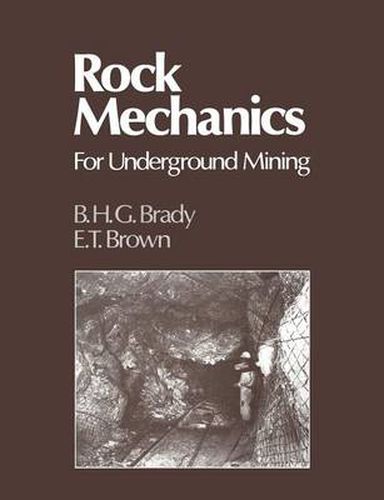Readings Newsletter
Become a Readings Member to make your shopping experience even easier.
Sign in or sign up for free!
You’re not far away from qualifying for FREE standard shipping within Australia
You’ve qualified for FREE standard shipping within Australia
The cart is loading…






This title is printed to order. This book may have been self-published. If so, we cannot guarantee the quality of the content. In the main most books will have gone through the editing process however some may not. We therefore suggest that you be aware of this before ordering this book. If in doubt check either the author or publisher’s details as we are unable to accept any returns unless they are faulty. Please contact us if you have any questions.
Rock mechanics is a field of applied science which has become recognised as a coherent engineering discipline within the last two decades. It consists of a body of knowledge of the mechanical properties of rock, various techniques for the analysis of rock stress under some imposed perturbation, a set of established principles expressing rock mass response to load, and a logical methodology for applying these notions and techniques to real physical prob lems. Some of the areas where application of rock mechanics concepts have been demonstrated to be of industrial value include surface and subsurface construction, mining and other methods of mineral recovery, geothermal energy recovery and subsurface hazardous waste isolation. In many cases, the pressures of industrial demand for rigour and precision in project or process design have led to rapid evolution of the engineering discipline, and general improvement in its basis in both the geosciences and engineering mechanics. An intellectual commitment in some outstanding research centres to the proper development of rock mechanics has now resulted in a capacity for engineering design in rock not conceivable two decades ago. Mining engineering is an obvious candidate for application of rock mechanics principles in the design of excavations generated by mineral extrac tion. A primary concern in mining operations, either on surface or underground, is loosely termed ‘ground control’, i. e.
$9.00 standard shipping within Australia
FREE standard shipping within Australia for orders over $100.00
Express & International shipping calculated at checkout
This title is printed to order. This book may have been self-published. If so, we cannot guarantee the quality of the content. In the main most books will have gone through the editing process however some may not. We therefore suggest that you be aware of this before ordering this book. If in doubt check either the author or publisher’s details as we are unable to accept any returns unless they are faulty. Please contact us if you have any questions.
Rock mechanics is a field of applied science which has become recognised as a coherent engineering discipline within the last two decades. It consists of a body of knowledge of the mechanical properties of rock, various techniques for the analysis of rock stress under some imposed perturbation, a set of established principles expressing rock mass response to load, and a logical methodology for applying these notions and techniques to real physical prob lems. Some of the areas where application of rock mechanics concepts have been demonstrated to be of industrial value include surface and subsurface construction, mining and other methods of mineral recovery, geothermal energy recovery and subsurface hazardous waste isolation. In many cases, the pressures of industrial demand for rigour and precision in project or process design have led to rapid evolution of the engineering discipline, and general improvement in its basis in both the geosciences and engineering mechanics. An intellectual commitment in some outstanding research centres to the proper development of rock mechanics has now resulted in a capacity for engineering design in rock not conceivable two decades ago. Mining engineering is an obvious candidate for application of rock mechanics principles in the design of excavations generated by mineral extrac tion. A primary concern in mining operations, either on surface or underground, is loosely termed ‘ground control’, i. e.